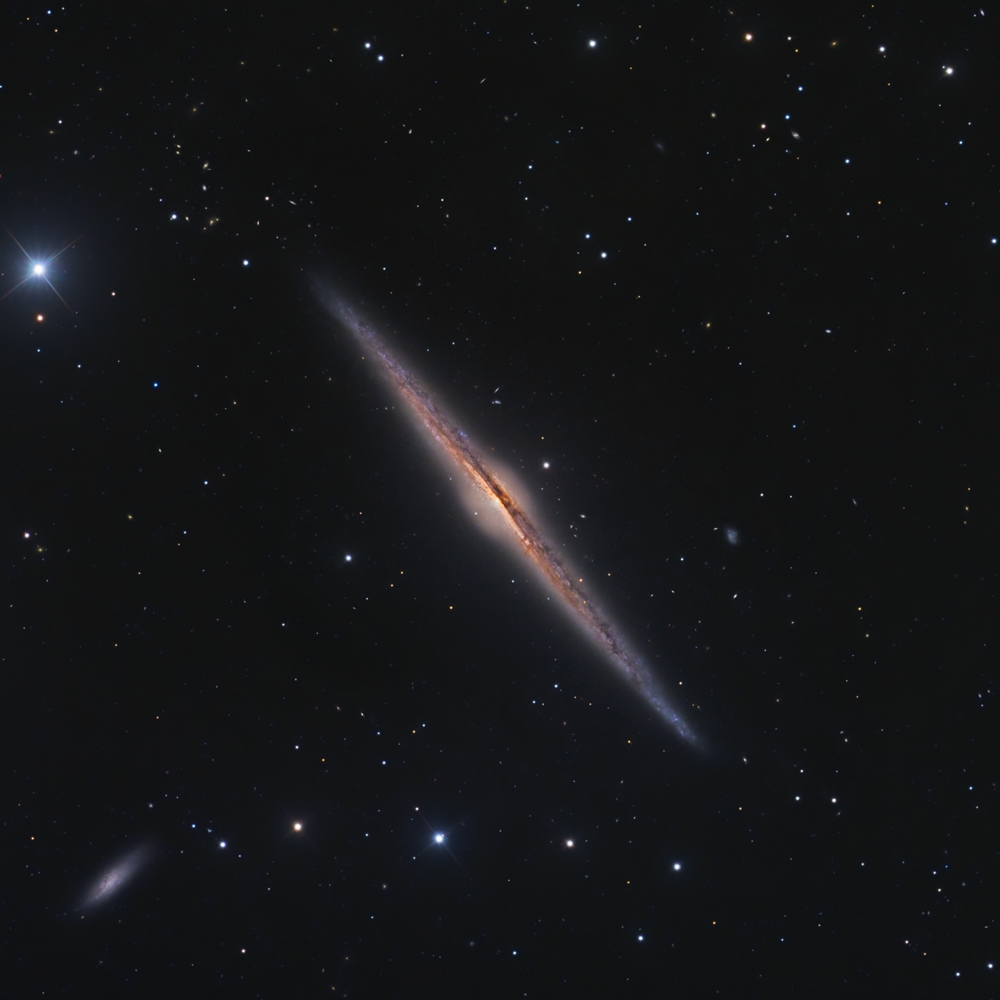
NGC 4565 is a very large spiral galaxy, presenting to us almost edge-on. NGC 4565 is estimated to be about 40 million light years away from us (relatively close, as cosmic distances go, for
galaxies I image). At that distance, NGC 4565 is about 186,000 light years in diameter (significantly larger than our Milky Way, itself a large galaxy). NGC 4565 is estimated to have about one trillion (one
thousand billion) stars.
It is thought that the shape of the central bulge indicates that this galaxy is a barred-spiral galaxy, but there still is debate on that point. You may note a bit of distortion toward both ends of the galaxy; these result from
past gravitational interactions with galaxies in the neighborhood of NGC 4565.
Lots of galaxies, including our galaxy, have many globular clusters associated with them. NGC 4565 is no exception. And this perspective allows us to see
them--There are a lot of faint, slightly fuzzy, star-looking points of light near the galaxy, which are (mostly, at least), globular clusters. As a point of reference,
this is a globular cluster in our galaxy.
As usual in a deep-sky image, there are a lot of small (meaning more distant) galaxies in the image (look for the oblong and/or fuzzy "stars"). In particular, there are a few
background galaxies large enough to see structure, some of which probably are interacting with NGC 4565 (easier to see in the, uncropped higher-resolution versions linked above).
Copyright 2023 Mark de Regt